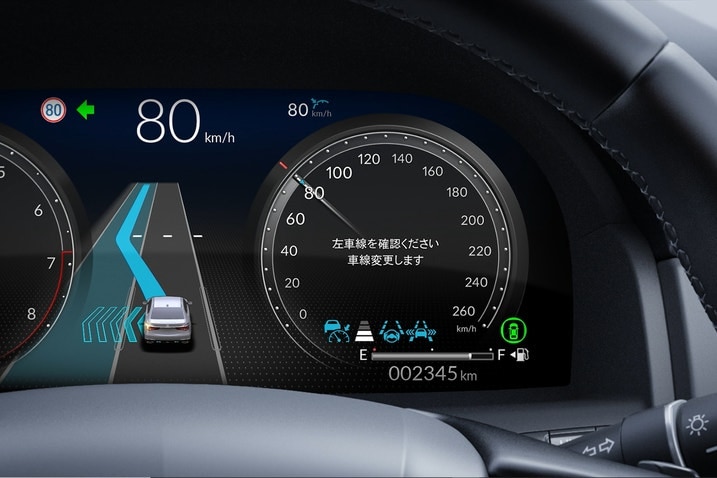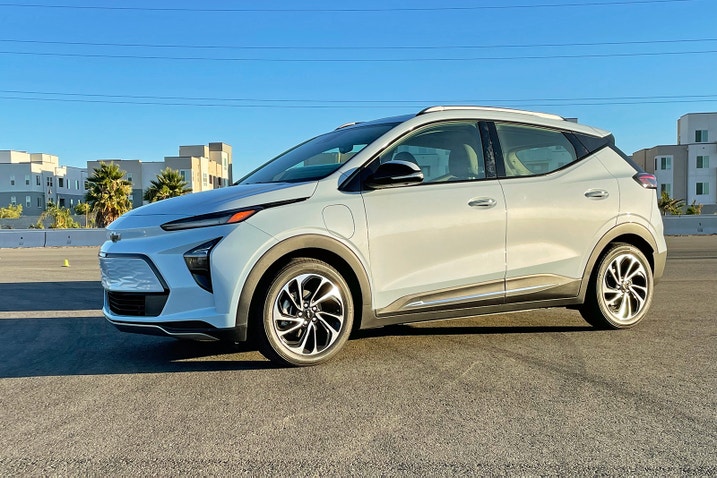Honda announced today that new features will be added to the automaker’s Honda Sensing suite of active safety systems over the next few years. Unfortunately, U.S. customers will have to wait quite a while before the best stuff comes to our shores, even though many of these features are already sold on Hondas in other markets or are currently available on budget-friendly rivals like the Chevrolet Bolt EUV.
Here’s everything Honda is planning.
Honda Sensing 360 for thee, but not for me
Honda has been applying the Honda Sensing branding to its suite of active driving aids since the 2015 model year, but a more advanced version of this system has been available in China since earlier this year. Dubbed Honda Sensing 360, the system is stacked with a number of features not available in the standard Honda Sensing suite. Honda Sensing 360 adds a number of millimeter-wave radar sensors to expand the area of coverage for the vehicle’s active safety features. They allow for additional features not present in non-360 models, including front cross-traffic alert, reducing adaptive cruise control speed while cornering, and partially automated lane changes.
These features aren’t groundbreaking in any way but they do make the Honda’s safety suite more competitive with systems from rivals. Nissan’s ProPilot Assist offers the same set of features, for instance. But Honda has been slow to roll Honda Sensing 360 out to consumers, as evidence by the initial release to the Chinese market this year. For reference, Nissan has offered ProPilot Assist since the second-generation Leaf debuted in 2018.
By 2024, Honda Sensing 360 will add a level of hands-free driving and lane changing to the system, but it’s not clear whether this will only be available at low speeds – à la BMW – or at highway speeds, as offered by General Motor’s Super Cruise or Ford’s BlueCruise. Also on the to-do list are an exit warning system and a driver monitor.
The U.S. launch of Honda Sensing 360 is at least three years away, with Honda’s announcement today stating, “The improved Honda Sensing 360 system will begin rolling out in the [second] half of the decade and will be standard on all new Honda and Acura models in the U.S. by 2030.” Motorcycle detection is also planned to be added by 2030. That means you’ll be waiting a while for features that are available on rivals now.
Honda Sensing Elite is even further away

Honda sent shockwaves when it became the first automaker in the world to release a vehicle capable of Level 3 autonomous driving. Only 100 examples of the Honda Legend were fitted with the tech but represented a significant step forward in the development of self-driving automobiles. Was wider adoption of Honda Sensing Elite just over the horizon?
Nope. Honda’s announcement today did mention Honda Sensing Elite, in the context that Honda engineers are working to add to the system’s capabilities. Starting in the “mid-2020s,” HSE will begin hands-off automation while navigating streets, merging onto and exiting highways, and parking in and driving out of garages.
But the automaker provided no additional details as to when Honda Sensing Elite will be available on additional models in Japan — where the 100 Legends with Level 3 functionality are leased — or in other markets like the U.S. Given that Honda is already disclosing that 2030 is a solid target for widespread adoption of Honda Sensing 360, it’s safe to say that Honda Sensing Elite is even further away.
Going hands-free today

All major automakers are advancing toward self-driving tech, so this announcement from Honda is primarily noteworthy with respect to how far away Honda is from delivering this tech to consumers.
So what do you do if you want self-driving tech now? Currently, no vehicles on sale in the U.S. today are capable of Level 3 autonomy, but Mercedes-Benz is close. The luxury manufacturer sells S-Class models with Level 3 tech in Germany now, and it’s in the final stages of rolling out its Drive Pilot Level 3 system for S-Class models in the U.S.
There are also a number of automakers with vehicles that offer a level of hands-free driving ability, which we consider a half-step between Level 2 and Level 3 autonomy. General Motors, Ford/Lincoln, Lexus, Nissan and Rivian sell at least one vehicle with hands-free high-speed driving on certain highways, while BMW has at least one vehicle with hands-free low-speed operation. The least expensive vehicle you can buy with a hands-free driving system is the 2023 Chevrolet Bolt EUV — the Premier model with Super Cruise package retails for $34,895 before any applicable tax credits.
And before you light up the comments section, no, Tesla’s misleadingly named Autopilot and Full Self-Driving systems are not hands-free. From Tesla’s Autopilot support page: “Autopilot is a hands-on driver assistance system that is intended to be used only with a fully attentive driver. It does not turn a Tesla into a self-driving car nor does it make a car autonomous.”





More Stories
Moon | Cartype
Rivian, Mercedes-Benz Joint Venture Paused
We Blew Up Our $5000 Drag Car ~ Can We Getting Fixed In Time? – Humble Mechanic